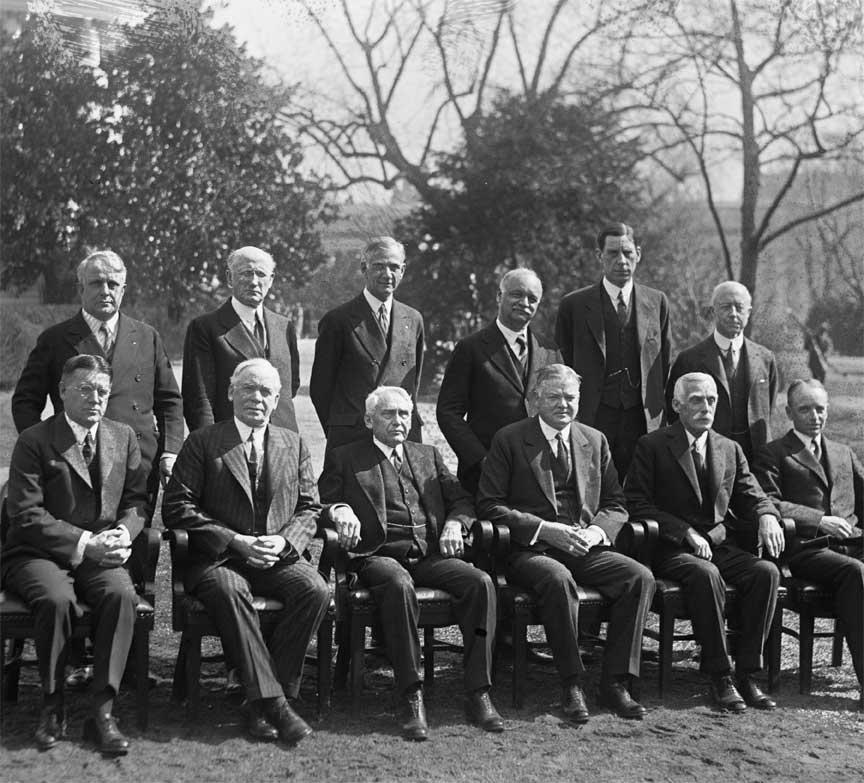Reconstruction Finance Corporation

Hoover Cabient
With the jobless rate on the rise, and increasing bank failures (e.g., 158 in August, 305 in September and 522 in October), Hoover was forced to take action. In December 1931, he called on Congress to establish the Reconstruction Finance Corporation. The corporation was authorized to loan money to banks, railroads and other institutions. The R.F.C. was unsuccessful in reversing the depression. Its actions were on too small a scale to have any effect.
The creation of the Reconstruction Finance Company was the first significant step taken to fight the Great Depression. It was created to provide support for small banks which the Federal Reserve could not help. In addition, the Federal Reserve was a conservative institution, and its fear of inflation made it very reluctant to increase the money supply. As a result, the Congress passed the Reconstruction Finance Corporation Act of 1932. The act was passed with broad support from both Democrats and Republicans. The Act was signed into law by President Hoover on January 22, 1932. It began to lend to small banks. Also, the Congress passed the Banking Act of 1932 which gave the Federal Reserve greater power to lend to more banks.
The RFC could not only loan to banks that it Federal Reserve could not, but also could use collateral that the Federal Reserve could not. The RFC raised an initial $500 million by selling bonds the US Treasury, that quickly grew to $1.5 billion. In its first year the RFC lent $1.5 Billion, and through 1941 the RFC lent a total of $9.465 Billion.
 >
>